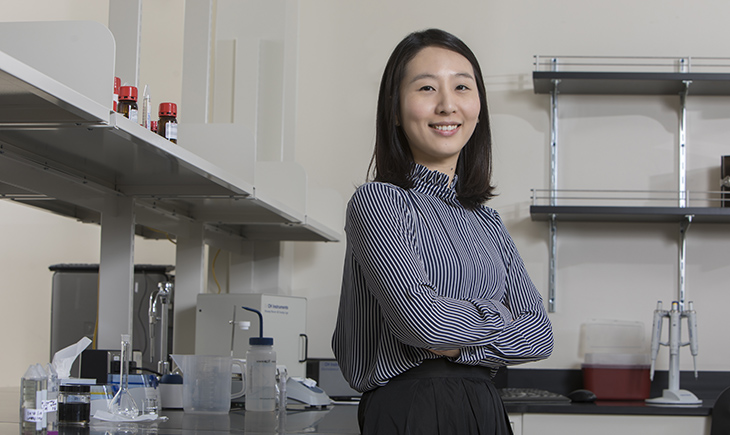Biomedical engineering research develops ultrathin, injectable sensors
Staying connected to her post-doc lab has helped assistant professor Ahyeon Koh build a network of researchers who are working on ultrathin needles with powerful sensors.

A new biomedical engineering study out of Northwestern University has developed an ultrathin needle that can be inserted into tumorous cells to measure the stiffness without damaging cells nearby. The study was conducted by Xinge Yu and evolved from research done by Binghamton University’s assistant professor Ahyeon Koh who also assisted with Yu’s study.
The paper titled “Needle-shaped ultrathin piezoelectric microsystem for guided tissue targeting via mechanical sensing” was published on Nature Biomedical Engineering’s website.
Yu and Koh worked together as post-docs in the same lab at the University of Illinois at Urbana-Champaign and have continued to collaborate since the lab moved to Northwestern University.
Yu’s recent study is inspired by work that Koh did in 2016. As a post-doc, Koh worked on creating a needle that could sense temperature but was also thin enough and flexible enough to avoid potential cell damage.
“You can think of it like a piece of tofu and a chopstick. If you stick a chopstick into tofu and then shake that chopstick around, the tofu is going to end up falling apart,” explained Koh. “You don’t want to do something like that when you’re sticking a needle into the brain or someone’s heart.”
Getting temperature readings from inside the heart was a big challenge for Koh’s study. “You can’t just get the temperature from the walls of the heart because that’s constantly cooling down. You need something that can go inside and sensor the temperature from there.”
Koh’s study was titled “Ultrathin Injectable Sensors of Temperature, Thermal Conductivity, and Heat Capacity for Cardiac Ablation Monitoring.”
Yu’s recent study uses a similar concept, but instead focuses on determining the stiffness of cells. The device Yu created can be incorporated in biopsy tools for evaluating tumor cells.
When asked about her previous work in the lab, Koh said that the collaborative environment is part of what has kept her connected to her post-doc coworkers.
“It’s a huge lab but we all stay connected and collaborate on work we’re doing at our respective institutions. We had a get-together in Chicago at the end of last year to share ideas and learn from each other,” she said.
Koh joined the Binghamton University Biomedical Engineering Department in 2016. She said she is looking forward to the work she is currently doing in her Binghamton lab and enjoys knowing that she always has her post-doc connections to further her current research.
